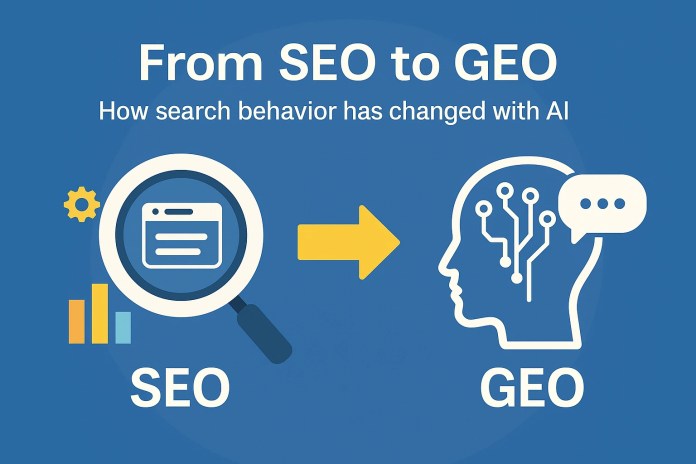AI tools like ChatGPT, Gemini, and Perplexity now deliver answers directly, that too often without linking to your site. In order to stay visible and stay ahead in the game of traffic, you need more than just SEO. You need AI search optimization. In this article, I’ll show you how to structure your content so LLMs can find it, understand it, and even cite it.
What is Generative Engine Optimization? (GEO)
Global Engine Optimization represents the evolution from traditional Search Engine Optimization. If I had to define GEO- It is the process of optimizing content to boost visibility in AI-driven search engines like ChatGPT, Perplexity, Gemini, Copilot, and Google AI Overviews. But why? Well, because of the rise of LLMs, and the change in the way people search for content. To know more, you can read this detailed overview on LLMs– it talks about what exactly are LLMs, how they work and why they matter.
Why GEO Matters in AI Search Optimization:
- AI-driven search is rapidly gaining market share.
- Direct answers that AI bots provide are reducing traditional website visits.
- Traditional SEO alone is no longer sufficient, if you’re a content creator or a SEO professional or if you have your own brand.
From SEO to GEO: How search behavior has changed with AI

So, right now AI is completely transforming the way we search. We don’t want to search something on the search bar, then look into 10 links and then click on a website for an answer. We want the answer to our questions fast. This change is reducing the number of traditional clicks and forces content creators to rethink visibility. Users now are prioritizing speed, relevance, and context over scrolling through endless pages. As a result of which, SEO strategies that once focused on ranking and getting backlinks are now evolving into GEO: Global Engine Optimization.
Similarities Between SEO and GEO
- Both aim to enhance content visibility online, making sure that the content reaches the intended audience effectively.
- Both involve strategic use of keywords and content optimization in order to improve content discoverability and relevance.
- They prioritize user experience and engagement, because a positive user experience and engagement is important for both human and AI consumption.
- SEO and GEO both build authority through credible content, thus both of them prioritize the foundational principle of E-E-A-T.
Differences Between SEO and GEO
| Aspect | SEO | GEO |
| Target | Top spot on search engine result pages (SERPs) | Aim to be cited or referenced in AI-generated answers |
| Output | List of Links | Synthesized responses |
| Content Focus | Usually on meta tags and titles | It focuses on meaning, clarity, and context-rich language |
| User Intent | Primarily on Keyword matching | Advanced AI interpretation |
| Success measurement | Success is measured by driving user traffic through link clicks | Success is measured by being quoted or summarized in LLM outputs |
The GEO Checklist: How to Get Cited by AI Models

- Structured Content: Ensure your content is properly organized with clear hierarchical headings, metadata and has semantic-rich language- which is clear and context rich for AI consumption.
- Schema Markup: Implement comprehensive schema.org markup to provide explicit semantic meaning. What this schema markup does is that it helps generative engines to identify key information such as FAQs, how-tos, authorship, and organizational data.
- Question-Focused Content: Just like FAQs, focus on creating content that directly answers the questions first and then elaborate with the correct details, make sure you use bullet points, lists and infographics. A tip: Target long-tail, conversational queries, this content is likely picked by LLMs
- Build Authority: Secure placements in highly-ranked list articles and well-known directories. The focus should shift from getting links from other websites for PageRank to getting mentioned in the right places. Why? Because this way AIs “learn” that your brand is associated with certain expertise. As reported by Lumar, by positioning your brand as an entity in Google’s Knowledge Graph, you will automatically support generative chatbots.
- Maintain and Update Content Regularly: LLMs tend to cite content that is fresh and is constantly updated. So make sure you refresh outdated content, update statistics, and reformat poorly structured pages.
- Use Natural, Accessible Language: Use a conversational tone, like you’re talking to your friend or like you’re explaining a concept to a student. The clearer your language, the easier it is for LLMs to extract and summarize your ideas.
Final Thought
In my opinion, the best way to navigate this shift is by integrating GEO with SEO. SEO should serve as the baseline, because it’s still very important for discoverability through traditional search engines. But GEO is the evolution and will take it a step further. It’s going to ensure your content is not only findable but also retrievable by AI models like ChatGPT, Gemini, and Bing Copilot.
Let me end this article with a simple analogy: SEO helps humans find your content, while GEO helps machines understand, extract and cite your content. So when you combine both strategies, you create content that ranks well on Google and shows up in AI-generated answers. That’s the future of visibility: one foot in traditional search, and one in the world of AI.



